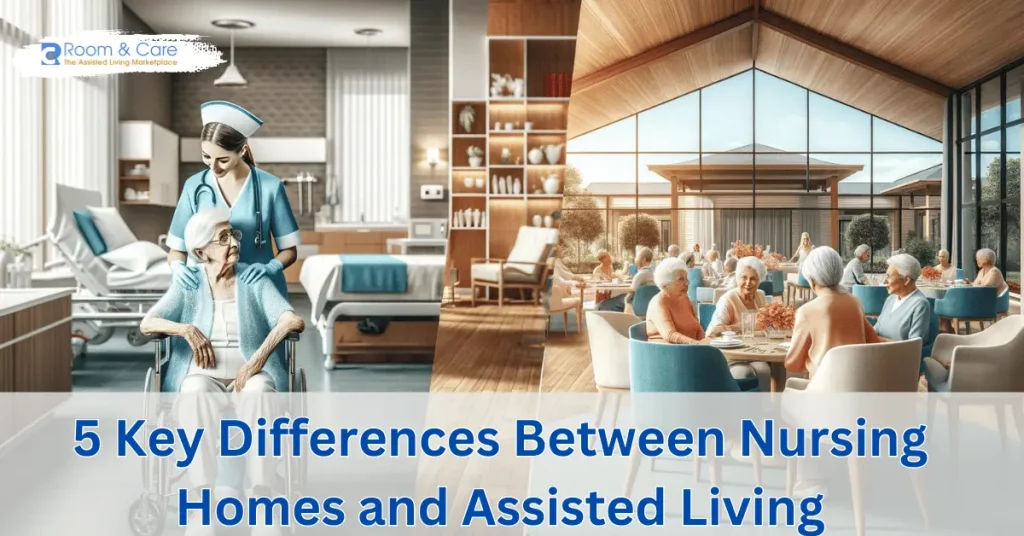

The landscape of elder care in the United States encompasses various types of facilities, each with its unique set of services and admission criteria. Particularly, Nursing Homes and Assisted Living Facilities serve different segments of the elderly population, defined by distinct medical needs and care requirements. Understanding these differences is crucial, not just for families, but for anyone involved in the process of selecting an appropriate care setting for an elderly individual. This article outlines five key aspects that distinguish Nursing Homes from Assisted Living Facilities, shedding light on their specific roles within the realm of senior care.
Nursing Homes, also known as Skilled Nursing Facilities, cater to individuals who require a high level of medical care, typically beyond what family members can provide at home. There are over 15,000 Nursing Homes in the United States, specifically designed to meet the needs of those with significant health challenges.
Admission to a Nursing Home generally requires a doctor’s referral. This referral indicates that the individual has health care needs that necessitate the specialized services available in these facilities. Common reasons for a Nursing Home admission include severe physical disabilities, advanced chronic illnesses, or the need for post-hospitalization rehabilitation.
Nursing Homes are distinguished by their provision of 24/7 medical care, including access to skilled nurses, therapists, and a range of healthcare services. These facilities are highly regulated to ensure the provision of quality care, with strict adherence to health and safety standards set by both state and federal agencies.

Assisted Living Facilities provide a different level of care, focusing on supporting residents with Activities of Daily Living (ADLs) while promoting as much independence as possible. There are approximately 28,900 Assisted Living Facilities across the United States, offering a variety of services and amenities to almost a million residents.
Unlike Nursing Homes, Assisted Living Facilities do not require a doctor’s referral for admission. These facilities are ideal for individuals who do not need intensive medical care but may require assistance with daily tasks such as bathing, dressing, and medication management. The emphasis in Assisted Living is on providing a supportive, communal living environment while respecting the autonomy and independence of the residents.
Assisted Living Facilities typically offer private or semi-private apartments, communal dining, social activities, and various levels of personal care services. While they are regulated at the state level, the oversight is less intensive compared to Nursing Homes, reflecting the lower acuity of care needs among their residents.
The admission requirements for Nursing Homes and Assisted Living Facilities highlight a fundamental difference in the nature of care each provides. Understanding these requirements is crucial for families and individuals making informed decisions about elder care.
For admission into a Nursing Home, a doctor’s referral is mandatory. This referral serves as a certification that the individual requires a higher level of medical care than what is available in less intensive settings. Typically, this referral is based on a comprehensive assessment of the individual’s medical condition, including their ability to perform Activities of Daily Living (ADLs), their medical history, and any specialized care needs. According to the Centers for Medicare & Medicaid Services, as of 2023, about 60% of Nursing Home admissions come directly from hospitals, reflecting the facility’s role in post-acute and long-term medical care.
In contrast, Assisted Living Facilities do not require a doctor’s referral for admission. These facilities are designed to accommodate individuals who are largely independent but may need assistance with certain daily tasks. The decision to move into an Assisted Living Facility can be made by the individual or their family, based on personal needs and preferences. The American Health Care Association reports that many residents choose Assisted Living for the social environment and the peace of mind that comes with having assistance readily available.
The level of medical care provided is another critical aspect distinguishing Nursing Homes from Assisted Living Facilities. This difference is pivotal in determining the most suitable environment for an elderly person’s care needs.
Nursing Homes are equipped to provide comprehensive medical care. They have licensed nurses, therapists, and medical professionals on staff around the clock, ready to handle a wide range of medical conditions. Services often include wound care, intravenous therapy, extensive rehabilitation services, and specialized care for conditions like Alzheimer’s and other forms of dementia. The National Institute on Aging notes that Skilled Nursing Facilities are increasingly focusing on rehabilitative services to aid in recovery from hospital stays or surgeries.
Assisted Living Facilities, while offering some level of medical support, do not provide the extensive medical care available in Nursing Homes. The medical services in these facilities are typically limited to medication management, basic emergency care, and coordination with healthcare providers. The focus in Assisted Living is on maintaining independence and quality of life, with medical care playing a supportive role. The 2023 data from the National Center for Assisted Living indicates that most Assisted Living residents enjoy a level of health that allows them to engage actively in community life, with only occasional medical intervention.

The living environment and amenities offered by Nursing Homes and Assisted Living Facilities greatly influence the daily life and satisfaction of residents. These factors are pivotal in choosing the right care setting.
Nursing Homes are primarily designed with a focus on healthcare needs. The environment tends to be more clinical, with easy access to medical equipment and facilities essential for intensive care. While efforts are made to create a comfortable atmosphere, the primary emphasis is on health and safety. According to a 2023 report from the Centers for Disease Control and Prevention (CDC), most Nursing Homes have shared rooms, specialized medical areas, and communal spaces for dining and limited recreational activities.
In contrast, Assisted Living Facilities offer a more homelike environment, aiming to balance independence with the necessary support. These facilities often feature private or semi-private apartments, communal dining areas, and various amenities such as gardens, libraries, and activity rooms. The American Seniors Housing Association’s 2023 data indicates that modern Assisted Living Facilities increasingly focus on creating vibrant communities, offering a range of social activities, classes, and events to encourage resident engagement and socialization.
The ratio of staff to residents is a critical factor in the quality of care and attention each resident receives. This ratio varies distinctly between Nursing Homes and Assisted Living Facilities.
Nursing Homes typically have higher staff-to-resident ratios to meet the intensive care needs of their residents. These facilities employ a wide range of healthcare professionals, including registered nurses, licensed practical nurses, and certified nursing assistants. The National Nursing Home Survey suggests that the average staff-to-resident ratio in Nursing Homes is designed to ensure that residents receive timely medical attention and personalized care.
Assisted Living Facilities generally have lower staff-to-resident ratios, reflecting the lesser medical needs of their residents. Staff in these facilities primarily assist with daily living activities rather than provide medical care. However, as reported by the National Center for Assisted Living in 2023, many facilities are now increasing their staffing levels and diversifying staff roles to enhance the overall living experience and respond to residents’ evolving needs.
The cost of living in Nursing Homes and Assisted Living Facilities is a significant consideration, with variations reflecting the level of care and services provided.
Due to the comprehensive medical care and staffing requirements, Nursing Homes are typically more expensive than Assisted Living Facilities. A 2023 Genworth Financial report states that the national median monthly cost for a private room in a Nursing Home is approximately $8,500, varying based on location and facility specifics.
Assisted Living Facilities, offering less intensive medical care, are generally more affordable. The same Genworth Financial report notes that the median monthly cost for Assisted Living is around $4,300. However, costs can vary widely depending on the location, size of the living space, and the level of care and services provided.

The decision to choose a Nursing Home is often determined by the medical necessity of the elder individual. These facilities specifically cater to those who require a high level of medical care, often necessitating a doctor’s referral. This referral is a crucial step, indicating that the person’s medical conditions are beyond the scope of what Assisted Living Facilities can provide. It’s based on a thorough medical assessment and is essential for admission into a Nursing Home.
For elders who require support with daily activities but do not need intensive medical care, Assisted Living Facilities are an appropriate choice. These facilities offer a balance of independence and assistance, providing help with daily tasks in a community-like environment. The decision to move into an Assisted Living Facility can be made based on the individual’s personal needs and preferences, without the requirement of a doctor’s referral.
When considering Assisted Living options and Nursing Homes, using a tool like Room & Care can facilitate the process. Room & Care allows direct connection with Assisted Living facilities and Nursing Homes, enabling individuals and families to gather information directly from the source. This direct line of communication can be crucial in understanding the specific offerings, environments, and costs associated with different Assisted Living options, aiding in the decision-making process.